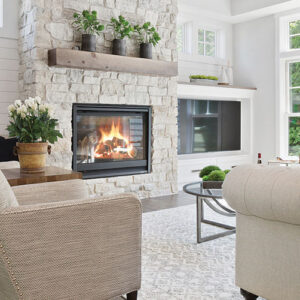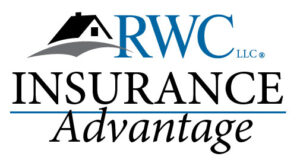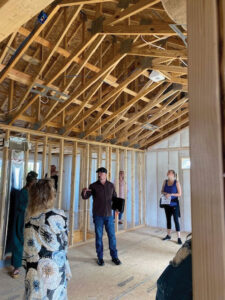A new year is the perfect excuse to refresh more than just your routine. In 2026, why not make your home part of your New Year’s resolutions? Small, thoughtful upgrades can make a big difference in how your space feels—and how you feel living in it.
January: Build a home gym
Skip the commute and make workouts easier by turning an unused room into a simple home gym. A mirror, rubber flooring, a fan, and a TV for workout videos go a long way—and can save serious money on gym memberships.
February: Upgrade your windows
Cold months are ideal for replacing drafty windows. Energy-efficient options keep your home warmer, lower energy bills, and add resale value.
March: Declutter and spring clean
Less stuff = less stress. Tackle one room at a time, donate what you don’t use, and enjoy a cleaner, healthier, more productive home.
April: Add a three-season room
A sunroom or screened-in space gives you more room to relax and enjoy the outdoors—without committing to a full addition.
May: Organize home records
Gather warranties, manuals, and renovation receipts in one place. It’ll save time, money, and headaches later—especially if you sell. (And remember – your RWC warranty stays with your home, which is a notable selling point!)
June: Boost curb appeal
Fresh landscaping, new outdoor furniture, or even a garage door upgrade can instantly improve first impressions and home value.
July: Schedule a plumbing check-up
A quick inspection now can prevent costly surprises later. While you’re at it, test shut-off valves and check for leaks.
August: Go smart
Smart thermostats, doorbells, and security systems make everyday life easier—and appeal to future buyers.
September: Plan a remodel
Thinking kitchen or bath? Start planning early. Gather inspiration, get quotes, and talk to a local agent about what actually adds value.
October: Switch to LED lighting
LED bulbs use less energy, last longer, and can save you hundreds a year—an easy win as nights get longer.
November: Freshen up with paint
Paint is one of the cheapest ways to transform a space. Go neutral if you’re selling, or have fun with color if you’re staying put.
December: Reflect and reset
Take a moment to appreciate everything you improved this year. Staying on top of home maintenance really does pay off—and you’ve earned that celebration.
As climate resilience, rising energy costs, and long-term home value climb higher on homeowners’ priority lists, the role of the builder is evolving. Today’s most successful builders are no longer just constructing houses—they’re future-proofing homes. At the center of this shift are high-performance windows and doors, coupled with smarter, more intentional design decisions that address durability, efficiency, and comfort from day one.
Climate Resilience Starts at the Front Door
Extreme weather events are becoming more frequent and more intense, placing new demands on residential construction. High-performance windows and doors are one of the first lines of defense against wind, water intrusion, heat, and cold. Impact-rated glazing, advanced weather-sealing systems, and robust frame materials help homes withstand storms while maintaining interior comfort.
For builders operating in coastal, wildfire-prone, or temperature-volatile regions, specifying resilient fenestration is no longer a premium add-on—it’s a baseline expectation. Homes that perform well under stress protect not only the structure itself but also the builder’s reputation long after the keys are handed over.
Energy Efficiency That Pays Off for Homeowners
With energy prices fluctuating and utility bills under constant scrutiny, homeowners are increasingly aware of how their homes perform. Windows and doors play a significant role in overall energy efficiency, directly impacting heating and cooling loads.
Low-E coatings, insulated frames, and multi-pane glazing reduce heat transfer, helping homes stay cooler in summer and warmer in winter. When paired with thoughtful orientation, shading strategies, and airtight construction, these products can significantly lower ongoing energy costs. Builders who communicate these long-term savings clearly give buyers a compelling reason to invest in quality upfront—often with minimal impact on the overall build budget.
Smarter Design, Better Living
Future-proofing isn’t only about materials; it’s also about design intelligence. Larger window openings placed strategically can maximize daylight while minimizing heat gain. Proper door placement can improve natural ventilation and traffic flow. These design choices enhance livability today while supporting energy performance and adaptability in the future.
Flexible floor plans, aging-in-place considerations, and compatibility with smart home technologies further extend a home’s useful life. Windows and doors that accommodate automation, improved security, and evolving accessibility needs help ensure the home remains functional and desirable for decades.
Protecting and Increasing Home Value
Homebuyers are becoming more educated, and many now ask detailed questions about energy ratings, durability, and maintenance. High-quality windows and doors signal craftsmanship and foresight, setting a home apart in competitive markets.
From a resale perspective, homes with documented energy performance, resilient features, and modern design principles tend to retain value better and sell faster. Builders who prioritize these elements position their projects as long-term investments rather than short-term solutions.
Builders as Trusted Advisors
Perhaps most importantly, leading with future-proofing elevates the builder’s role from contractor to trusted advisor. Homeowners often rely on builders to guide decisions they may not fully understand, particularly when it comes to performance features hidden behind walls or embedded in the building envelope.
By proactively recommending smarter window and door systems and integrating them into cohesive design strategies, builders demonstrate expertise, transparency, and commitment to homeowner outcomes. This approach not only reduces callbacks and warranty issues but also drives referrals and brand loyalty.
Looking Ahead
The homes being built today will face very different conditions over their lifespans than those of the past. Builders who anticipate these changes—and design accordingly—will lead the industry forward. By focusing on high-performance windows, doors, and smarter design choices, builders can deliver homes that are more resilient, more efficient, and more valuable well into the future.
Future-proofing isn’t a trend. It’s the new standard.
A few weeks ago, a builder called to get a general liability quote. I asked when his current policy expires. He replied, “oh, I let that policy go a few months ago when my last project was finished.” Are you no longer in business? I asked. “Sure,” he said, “I just don’t need insurance since I’m not building right now.”
I was beginning to feel a little uncomfortable. Did you sell your last house then? was my next question. “No,” he innocently replied. Are you trying to sell it? I asked. “Of course, I’ve got open houses every weekend. I had maybe two dozen people walk through just last Sunday,” he said with pride.
As our conversation continued, it slowly emerged that this builder simply didn’t think he had any responsibility to the public during his weekend open house tours. Not only that, but he had also recently gone back to an earlier home buyer to finish a downstairs family room. Yet another past customer had asked about adding a Florida room. Our builder gave an estimate and was waiting to hear back. He admitted he’d “probably” need general liability insurance then to do these small projects, but it was clear he didn’t really see the risks involved. Whether this was due to a desire to control costs, an over-reliance on his subcontractors, or just a lack of understanding as to how general liability insurance works, is hard to say. To this builder’s credit, he allowed me the time to walk through the liability risk potential of each scenario we discussed.*
 First, the weekend open house tours: Until it is sold, the home, finished or not, is the property of the builder and he is liable for bodily injury to any member of the public who sets foot on any part of the property and is injured. This is true whether they are there as invited guests between 1:00 and 4:00 each weekend, or if they stop by unannounced after work on a Tuesday. In fact, if anyone who is not working for the builder gets hurt while on the property, they have a right to file a liability claim and a lawsuit against the builder. Without general liability insurance, the builder is on his own.
First, the weekend open house tours: Until it is sold, the home, finished or not, is the property of the builder and he is liable for bodily injury to any member of the public who sets foot on any part of the property and is injured. This is true whether they are there as invited guests between 1:00 and 4:00 each weekend, or if they stop by unannounced after work on a Tuesday. In fact, if anyone who is not working for the builder gets hurt while on the property, they have a right to file a liability claim and a lawsuit against the builder. Without general liability insurance, the builder is on his own.
Next, finishing the family room: The subcontractor hired to do this small job has his own general liability insurance and the builder has a certificate proving it, issued when the policy renewed about four months ago. Unfortunately, the sub’s policy was recently cancelled for non-payment of premium. While at the home, the subcontractor carelessly drops a cigarette butt that starts a fire causing over $100,000 in damage to the home. The smoke, heat and water damage sustained by the home next door when the fire department put out the blaze isn’t covered either. That’s worth another $215,000. All this damage would have been insured in addition to the cost to defend the builder in the resulting lawsuits, had our builder not canceled his general liability policy when he finished construction.
 Last, but not least, the Florida room: The subcontractor has active general liability insurance. Nothing happens during the project. Everyone’s happy. Then, about a year later, during an unusually cold winter, the homeowner starts his gas fireplace for the first time in ages. The fireplace is in the living room that adjoins the new Florida room. Not long after flipping the switch, there is a terrible explosion. The house is a total loss. It seems the subcontractor had nicked a gas line with a drill during installation of the prefab Florida room. With such a catastrophic loss, the subcontractor’s policy limit is quickly used up. Our builder’s policy would have provided excess limits because the builder is liable for hiring the subcontractor who nicked the gas line. Since our builder doesn’t have $1,000,000 laying around, he’d lose his business in this scenario.
Last, but not least, the Florida room: The subcontractor has active general liability insurance. Nothing happens during the project. Everyone’s happy. Then, about a year later, during an unusually cold winter, the homeowner starts his gas fireplace for the first time in ages. The fireplace is in the living room that adjoins the new Florida room. Not long after flipping the switch, there is a terrible explosion. The house is a total loss. It seems the subcontractor had nicked a gas line with a drill during installation of the prefab Florida room. With such a catastrophic loss, the subcontractor’s policy limit is quickly used up. Our builder’s policy would have provided excess limits because the builder is liable for hiring the subcontractor who nicked the gas line. Since our builder doesn’t have $1,000,000 laying around, he’d lose his business in this scenario.
So, what are the odds of any of those things actually happening? It's anybody's guess. You see, insurance is based on the law of large numbers. If you toss a coin enough times it will come up heads half the time. If you toss it only a few times, there’s little chance of predicting heads or tails. Are you feeling lucky?
*These are only a very few of the potential risks associated with general liability and are intended merely to illustrate the potential for uninsured losses.
Good news -- we gotcha covered! Contact us today for more info on GL, Builders Risk, or Contractor's Equipment Insurance. The RWC Insurance Advantage (RIA) program is offered exclusively to our builder members. Because of that, we are able to avoid the high risks associated with other commercial operations. Thus, we keep the cost of claims low and pass the savings on to you. More info / questions: 866-454-2156 or info@rwcinsuranceadvantage.com.

www.rwcinsuranceadvantage.com
By Doug Davis, RWC Insurance Advantage
 If you are looking for an extra special gift for that animal lover on your list this holiday season, we have a suggestion. Our very own RWC Account Executive, Staci Cool, recently released an adorable children's book entitled Not All Reindeer Can Fly.
If you are looking for an extra special gift for that animal lover on your list this holiday season, we have a suggestion. Our very own RWC Account Executive, Staci Cool, recently released an adorable children's book entitled Not All Reindeer Can Fly.
Not All Reindeer Can Fly centers around Ivy, a lost husky puppy who is taken in by Santa and his reindeer to be raised at the North Pole. After a blizzard threatens to halt the delivery of presents, Ivy comes to learn that, although she is different from the rest of her North Pole family and friends, she has an ability unlike anyone else.
This is a slightly longer than average Christmas story filled with heart, tenderness, and warmth. Adults and children find delight in this story focused on finding one’s purpose through discovering one’s unique skills. A portion of the proceeds for the book are being donated to a local no-kill shelter through the holiday.
You can find Not All Reindeer Can Fly on Amazon, Barnes & Noble, and via www.coolestbooks.com.
The Market Is Shifting — Confidence Still Sells. As material costs stabilize and interest rates fluctuate, homeowners are more cautious about new construction investments. What’s winning their trust? Builder accountability and structural protection. That’s where RWC Structural Warranties step in — offering builders a competitive edge, cost protection, and credibility in a cautious market.
Top 3 Reasons Builders Are Doubling Down on Warranties This Fall
- Buyer Confidence = Faster Sales
Homebuyers today expect reassurance beyond craftsmanship. A 10-Year Structural Warranty from RWC helps seal the deal by showing that your homes are backed by an industry leader with 40+ years of expertise and over 4 million homes covered nationwide. - Reduce Risk in Uncertain Markets
With shifting soil conditions, supply chain variations, and evolving codes, structural claims can be unpredictable. RWC’s coverage helps limit your liability — protecting your bottom line long after closing. - Stand Out with Builder-Centric Support
We’re not just a warranty company — we’re your partner. From remodeler and commercial coverage to state-specific structural options, our programs are designed to meet your project mix and protect your reputation.
Builder’s Fall Prep Checklist: Protect Your Projects Before Winter Hits
- Inspect & Document Foundations Early
Seasonal shifts can cause unseen soil movement. Early documentation supports both warranty claims and preventive action. - Educate Homeowners Before Move-In
Provide simple care guides on grading, drainage, and maintenance.
Reduces callbacks and unnecessary disputes. - Review Warranty Registrations
Make sure every new home, remodel, and commercial project is enrolled.
A missed registration means missed protection. - Evaluate Your Warranty Coverage Mix
Building both residential and light commercial? Ask about bundling our various warranty plans and coverage to streamline your risk protection. - Plan Now for Q4 Marketing
Add “10-Year Structural Warranty Included” to listings and sales sheets.
It’s a proven differentiator that resonates with buyers in today’s market.
- 10-year structural coverage means long-term liability protection.
- Remodeler Warranty equals added credibility for renovation projects.
- Commercial Warranty allows you flexible solutions for mixed-use & light commercial builds.
- Expert Claims & Engineering Team provides you with real support when you need it most.
- Nationwide Network deliver local understanding with national strength.
Keep Building with Confidence
Whether it's a single custom home, a commercial project, or a remodel - RWC ensures lasting protection, professional credibility, and buyer peace of mind.
By Tiaira Satchell, RWC
In the little towns where we grew up, homeowners, like our parents, knew the people to hire if their home needed repairs or modifications. There was Mr. Allen for sidewalks and other flat work. Mr. Teufel was the man to call if you were replacing wallpaper, especially if the work was needed in your foyer or living room. The Wilson brothers were best for roofs, and if a ball had been thrown through a window, they would hire Mr. White, if they could get him. Often the deciding factor on whether to retain any of these gentlemen was not dependent on price, but on how soon they could come and do the work. They were all in demand because they were known to be craftsmen whose work was usually worth the wait.
Another such craftsman we were lucky to know personally was the carpenter, Mr. Nonemaker, or as we knew him, our great uncle Bill. He was a master cabinet maker who could remodel kitchens and fix anything, but more impressively to us at the time, could convert any dark or creepy basement that did not have a dirt floor into a rec room where countless hours of pool or ping pong would be played. For livelier and more well-heeled customers, he would add a bar, and perhaps a powder room. He was careful and methodical in his work and liked to fish a lot (and drink a bit), so sometimes his projects would take a while to complete. But he was worth waiting for. He loved when customers would tell him that friends and neighbors who were invited for the first time to the rec room or remodeled kitchen would run their hands along cabinets, drawers and seams before asking, “This is Mr. Nonemaker’s work, isn’t it?”
Times have changed, of course, with the big box hardware stores dotting the landscape and DIY “experts” populating You Tube with How-To videos. And that’s a shame because, while people might be getting their home repairs done more quickly and on their own time and money terms, they do not get to appreciate the product that was delivered by the Mr. Whites, the Wilson brothers, or the Uncle Bills we remember from just a few decades ago. Richard Sennett, the renowned American sociologist who studies work in modern culture, distinguishes mere work from craftsmanship and describes craftsmanship as “the desire to do a job well for its own sake.” White, the Wilsons, and Uncle Bill were not mere workers. They were craftsmen who took pride in their work, as if it were an art form.
With building supply prices near all-time highs and with pressure from buyers pushing housing prices downward, builders face pressure to keep their costs down. But just as it was decades ago, people will pay for quality and for a home they can take pride in, and nothing makes a homeowner prouder of his home than when people notice the craftsmanship that went into building it. A good way to distinguish your company from your competitors is to insist that your employees and subcontractors who are in the trades not just build to code but build with a level of craftsmanship that gets noticed and is appreciated by your customers and prospective customers.
You may think this suggestion is crazy given the reported shortage of skilled home building labor. This shortage is well documented in a study released by the Home Builders Institute earlier this year. According to the HBI, the aggregate economic impact from longer construction times associated with the skilled labor shortage costs the industry an estimated $10.6 Billion each year. The shortage also results in a reduction of nearly 20,000 homes built per year and an average increase in construction time of about two months per home built. In light of these findings, the NAHB and the HBI are supporting hands-on training programs and industry-recognized certifications to help produce a new generation of skilled laborers.
Recognition of this problem and an industry-wide effort to address it could not come soon enough. Here at RWC, for the first time in forty years, we have noticed an uptick in workmanship claims dating back to the Covid pandemic. Some builders in some parts of the country seem to have trouble finding subcontractors and skilled laborers who have and demonstrate the pride of a craftsman in their work. We believe each of our members, following the lead of the NAHB, can either rid themselves of this problem or make sure they don’t experience the problem in the first place in the following ways.
First, find young people (male and female) who are looking for a rewarding career that gives them the opportunity to do something they can be proud of. Start with vocational schools or check your local high schools for career pathway programs that team with employers to give students shadowing and interning opportunities. Throughout the process of exposing students to your operations, plant the seed early that your company is a place for craftsmen, that working there will be different from working other places, and that you want your whole team to take pride in what they do. If the articles we read about the expected growth of Artificial Intelligence can be believed, there will be many fewer entry-level white-collar jobs available to young people over the next decade. Get your recruitment plan ready now and grow that next generation of craftsmen from what may be an expanded pool of candidates.
Second, train your new employees and subs not just to build to municipal code standards, but to build to your company’s standards. Set that bar high enough that people, after seeing the high level of craftmanship in any of your homes, will turn to the owner and ask, “This is (Your Company’s) work, isn’t it.”
Third, if all goes according to plan, your skilled workers will improve your company’s reputation, increase sales, and even allow you to charge more for your homes. Share your good fortune with them. Pay them what they deserve, like craftsmen, who “do a job well for its own sake,” and thus keep them building for you and not for your competitor.
We believe that if you follow this plan, you will become even prouder of the homes you build, and you’ll sell more of them. And when you do, make sure that each and every one of your homes are covered by an RWC new home warranty.
Over more than forty years, RWC has provided warranty protection on over four million homes. We offer a wide variety of warranty options like our standard ten-year warranty, our Day 1 coverage warranty, our extended appliance and system warranties, and our specialty warranties for remodeling projects, detached garages, and commercial construction. Only RWC has developed and offers its members a customized state warranty that mirrors each state’s statute of repose and accommodates other state specific issues. All RWC warranties provide clear performance standards that help create realistic homeowner expectations and provide a road map to resolve even the stickiest customer complaints.
At RWC, every guarantee our warranties make is backed by Western Pacific Mutual Insurance Company, RRG. Western Pacific has an A- rating from A. M. Best and only insures home warranty and similar new home construction risks, like builders’ general liability, which can be offered through the RWC Insurance Advantage program to RWC members. No other warranty company has an insurer with this kind of strength solely dedicated to covering builders and their homes.
Like the skilled craftsmen you know, we at RWC take pride in our work and try to do every job well, just for the sake of doing it well. Help us put that attitude to work for you by placing an RWC warranty on every home you build.
Have a great fall & winter!
One of the often-overlooked benefits of becoming a member of RWC is the customer service support that comes with the warranty.
Our Warranty Resolution Administrative Team fields an average of 40 calls each day from homeowners. These calls can be as simple as asking how exactly to submit a warranty request (claim), but more commonly, homeowners are reaching out because they are experiencing an issue with their home.
Our trained Warranty Administrative Assistants listen carefully to each concern and provide guidance on what is - and isn’t - covered under the warranty.
For example, if a homeowner inquires about an item not covered, we explain the coverage and the relevant exclusions, which are referenced in their warranty booklet.
This helps homeowners understand their coverage more clearly and prevents unnecessary calls to the builder regarding issues that fall outside the scope of coverage.
By Sandra Sweigert, RWC
 At this year’s BAGI Bash (Builders Association of Greater Indianapolis) creativity was on full display — and not just in the latest tools, materials, and smart-home gadgets. The event organizers challenged vendors with a theme -- to design their booths around their favorite movie. RWC’s account executives Staci Cool and Crystal Jackson went all in with the theme and turned out a spectacular booth that was not only perfectly on point for the prompt & the time of year, but also for our industry - inspired by the classic 1990 film Home Alone.
At this year’s BAGI Bash (Builders Association of Greater Indianapolis) creativity was on full display — and not just in the latest tools, materials, and smart-home gadgets. The event organizers challenged vendors with a theme -- to design their booths around their favorite movie. RWC’s account executives Staci Cool and Crystal Jackson went all in with the theme and turned out a spectacular booth that was not only perfectly on point for the prompt & the time of year, but also for our industry - inspired by the classic 1990 film Home Alone.
Visitors were greeted by our very own “wet bandits,” on hand to help educate attending builders on potential booby traps, and craft the ultimate home protection plan. (After all, even Kevin needed backup!) Every detail crafted in their booth served a purpose. Informative flyers reminded attendees that accidents happen and highlighted how a comprehensive home warranty can prevent small issues from turning into full-blown disasters. And cute, clever Little Nero’s pizza boxes were filled with a variety of fun, handy items and goodies.
And if you wanted to win the Home Alone–themed prize, well then, you needed to prove your smarts in the “Wet Bandits Warranty Trivia” game. Those who scored the highest were entered into a drawing to win the “Cozy Night In” gift basket. Inside were treats like a gift card (for a plain cheese pizza, if you prefer), plenty of snacks, and Home Alone–themed koozies to keep your beverages cold while you “eat junk and watch rubbish.”
 Congratulations to Bob Sandberg with RLS, located in Indiana, for winning the prize! Bob has been a loyal member with RWC for 27 years.
Congratulations to Bob Sandberg with RLS, located in Indiana, for winning the prize! Bob has been a loyal member with RWC for 27 years.
But beneath the laughter and holiday spirit, there was real business being done. The booth attracted steady traffic throughout the day, giving the team a perfect chance to connect with builders, realtors, and contractors. The theme may have made people smile, but it also made them stop. Everyone remembers the chaos of that movie — and Staci and Crystal used that feeling to talk about how a home warranty helps prevent real-life chaos.
Not long ago, the choice between buying a resale home and building a new one was often dictated by price. Resale homes were typically more affordable, and building seemed like a luxury reserved for those with bigger budgets and longer timelines. But the market has shifted — and the gap between the two options is quickly disappearing.
Cost Gaps Are Narrowing — And In Some Areas, They're Gone
Just a few years ago, building a home could cost anywhere from 15% to 30% more than buying an existing one. But as housing prices continue to rise in the resale market — driven by high demand, low inventory, and inflation — that difference is shrinking. In many regions, especially fast-growing suburban and rural areas, the cost of a newly built home is now equal to or even less than that of a comparable resale home. On a broader scale nationwide, the median sales price for a new single‑family home was $416,900 in the first quarter of 2025; an existing home’s median was $402,300 — a difference of just $14,600.
When you factor in renovation costs and the premium buyers are paying in today’s resale market, building a home can be a smarter financial choice.
Material & Labor Costs Are Stabilizing
The construction industry was hit hard in the early 2020s by supply chain issues and labor shortages, driving up the cost of building materials like lumber, concrete, and drywall. These inflated prices made new construction less competitive with resale homes. However, as supply chains stabilize and construction labor becomes more available, costs have plateaued or even declined in some markets. Builders are now able to offer more competitive pricing, sometimes with added incentives like free upgrades or closing cost assistance.
Modern Efficiency = Long-Term Savings
Building a new home today means benefiting from the latest in energy efficiency, insulation, windows, appliances, and HVAC systems. These upgrades translate to significant savings on utility bills, often hundreds of dollars per year compared to older homes.
Customization Is King
Building a home doesn’t just give you a blank slate — it gives you control. You can design the layout that fits your lifestyle, choose finishes that reflect your taste, and enjoy energy-efficient systems that cut down your monthly expenses. Want an open-concept kitchen, a home office, or a spa-like bathroom? It’s yours. You don’t have to settle for someone else’s choices or invest time and money to remodel a resale home to fit your needs. This level of personalization is especially appealing to younger buyers and growing families who want homes that reflect modern living.
Less Competition, Less Stress
Buying a resale home in a hot market often means bidding wars, waived inspections, and rushed decisions. It’s emotionally draining and can lead to compromises — or overpaying. Building a home offers a clearer, calmer path.
Builder Incentives Are Making New Construction More Attractive
In a bid to compete with the resale market and move inventory, many homebuilders are offering aggressive incentives which can reduce your upfront costs or make the long-term mortgage payments more affordable — narrowing the perceived cost difference with a resale purchase.
Builder Warranties = Peace of Mind
New homes come with builder warranties, like the array of products we offer at RWC and our affiliates, that cover structural components, major systems, etc. It’s a proven bonus that can help homeowners avoid unexpected repair bills in the first few years.
Building May Be the Better Bet Today
While building a home was once seen as the more expensive or impractical option, potential buyers need to understand today's market has changed. With rising resale prices, limited inventory, and the long-term benefits of new construction, building is not just a luxury — it’s a smart choice.
By Victoria Sontheimer, RWC
2025 National Sales Meeting Highlights

The sales teams recently gathered in Harrisburg, PA for our 2025 National Sales Meeting - a week dedicated to collaboration, innovation, and finding new ways to serve our valued builder members.
This year’s theme was all about growth and progress. From enhancing our warranty programs to introducing new homeowner-focused products, we’re streamlining operations and expanding opportunities for builders nationwide.
Our team also explored exciting technology upgrades and marketing initiatives designed to make doing business with RWC faster, simpler, and more effective.
Our reps joined field training sessions at active job sites, seeing firsthand how RWC coverage protects builders and homeowners from the ground up.
We’re energized for what’s ahead—new products, greater efficiencies, and continued innovation—all aimed at helping our members build with confidence.
Onward and upward—together.
By Rich McPhee, RWC National Sales Manager
